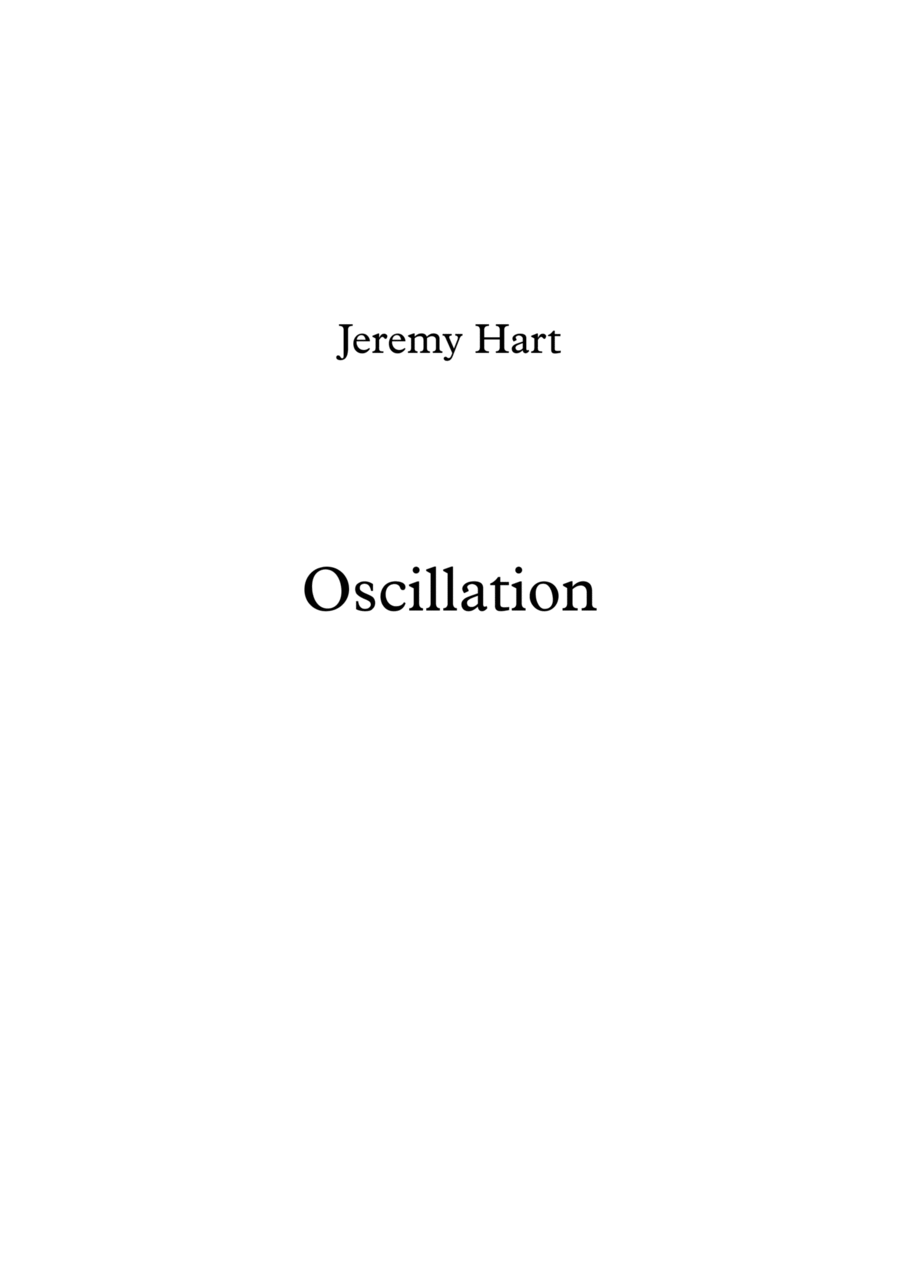Small Ensemble B-Flat Clarinet,Cello,Viola,Violin - Level 5 - Digital Download SKU: A0.1028192 Composed by Jeremy Hart. 20th Century,Contemporary. Score and parts. 37 pages. Jeremy Graham Hart #6590413. Published by Jeremy Graham Hart (A0.1028192). Oscillation began as an experiment in coordination of a melody and harmony which are based on different means of organization. To this end, the clarinet is treated separately from the string quartet. The clarinet melody is constructed by means of limited interval usage. In mm.1â3 it can be observed that the melodic intervals are strictly limited to the use of a major 2nd/minor 7th or a major 6th/minor 3rd. By contrast, the string quartet has no limitation on its intervallic usage but always strives towards triadic harmonies in its accompanimental capacity and tends to converge on harmonies diatonic to the key. In addition, despite the proliferation of non-chord tones and transitionary passages in the string quartetsâ music, the stable harmonies are written to have fairly parsimonious motion between them (if one were to reduce out the NCTs etc.) The coordination of these two separate logics is done by the selection of anchor-pitches for the melodic phrases. For example, the melodic phrase in mm.4â7 oscillates around the pitch of G natural (transposed in the score), which it shares with the F major/minor 7th chord that is heard as the harmonic goal of the strings in m.7. The teleology of the work can largely be traced in its melodic construction. Its opening phrase of mm.1â3 is anchored on G natural and ends on a C sharp, a tritone above the anchor, to simulate a half-cadence effect. The second phrase of mm.4â7 is still written on G natural but it ends on G as well, forming the authentic cadence and establishing a basic period as well as the workâs first theme. This is followed by second period which represents a dominant relationship to the first. The phrase at mm.10â13.2 is a rather extended utterance in comparison to the first two and is anchored on D natural. This is followed by 4-stage call and response across the ensemble (excluding the second violin) that leads the first section to a close at m.16 on a C diminished triad. Melodically, the first section is characterised by its limited used of a major 2nd/minor 7th or a major 6th/minor 3rd interval. At m.17, the second section follows much the same process as the first, using anchor pitches as a means of coordination and formal definition, and alternating soloistic clarinet playing with activated harmonies in the strings. The primary difference is in the character of the second sectionâs theme with regards to its rhythmic profile as well as its intervallic content. Namely, these are limited to the use of a minor 3rd or minor 2nd and their inversions. The second section draws to a close at m.32, returning to the tonic harmony of the key. With the first and second sections complete, the work now proceeds into a developmental section. Mm.33â84 largely consists of development of the two themes by manipulation of intervallic content as well as adjusting the placement of the thematic material withing the accompanimental context. This does include juxtaposition of the two themes (though one typicall becomes integrated into to accompaniment) as can be seen between the violin and viola at m.39. Variety is heightened by the introduction of episodic material such as the secondary melody performed by the clarinet at mm.40â41. The Lento section starting at m.53 introduces further rhythmic and metric adjustment of the thematic content. A varied recapitulation occurs at mm.85â113 and is followed by a coda at mm.114â131.
